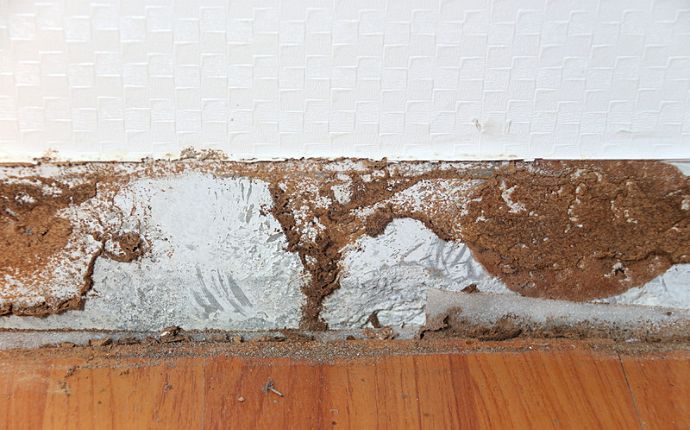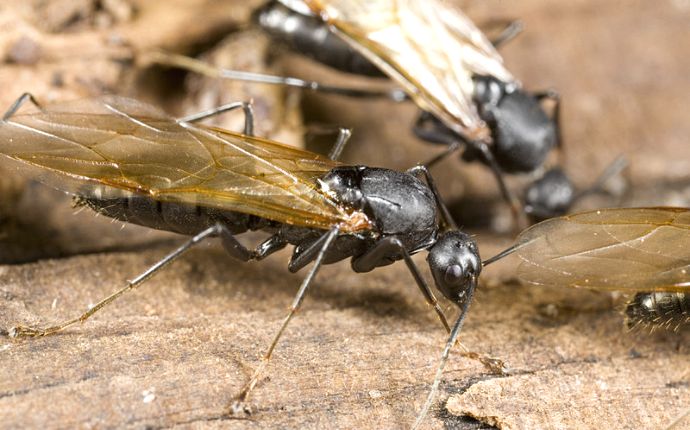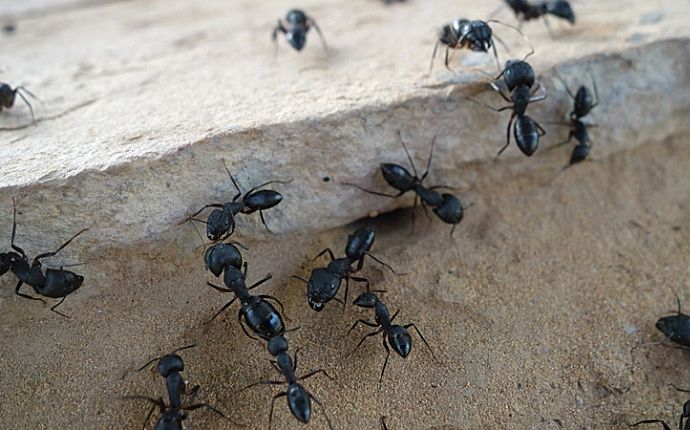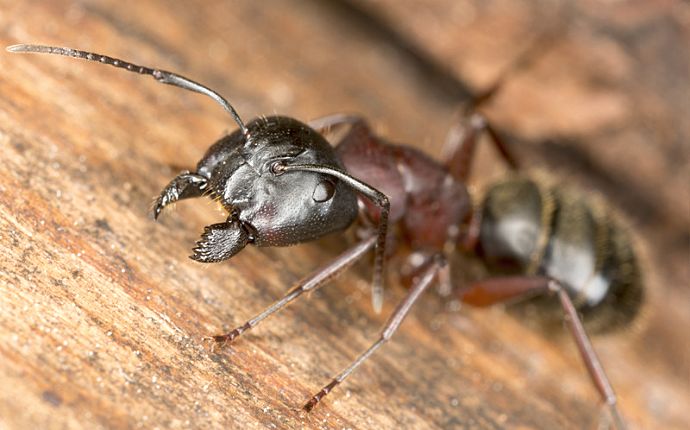The bite of a carpenter ant is not a cause for concern, but these ants can cause extensive damage to your home.
Carpenter ants are unique from other ant types because their body has one nodule. Most other ant types have two. The carpenter ant also has a long, narrow thorax. Unlike some household pests, mature carpenter ants are large enough to be seen easily.
Knowing what signs to look for can help you catch a carpenter ant infestation earlier and protect your San Antonio home from damage.
Romney’s 3-Step Carpenter Ant Approach
Our 3-step approach to carpenter ant infestation works to eliminate carpenter ants and protect your home from future infestations. Here’s how it works.
Thorough Inspection
We start by looking for evidence of carpenter ants, including:
- Wings around window sills/entry points
- Mounds of sawdust
- Ants visible on windows/window sills
- Bulging in walls/floors/ceilings
We pay special attention to areas with high moisture since these are popular places for colonies. Once we’ve identified infested areas, we can start treating them.
Effective Treatment

The next step is to treat your home for carpenter ants. We do this by finding and targeting carpenter ant nests to eliminate the problem at the source.
Targeting the nests stops the colony from spreading further by killing off the queen and her young. But it also eliminates worker ants and other colony members.
Prevention
Once we’ve diagnosed and treated your carpenter ant infestation, our experts will talk you through what you can do to prevent them from returning. Take measures like:
- Using dehumidifiers
- Fixing leaks
- Paying for professional stump removal
Signs of Carpenter Ant Infestation
The damages caused by carpenter ants can be severe. Here’s what to look for if you suspect these pests are living in your home.
Frass

Frass is the piles of wood shavings. Carpenter ants leave trails of frass behind when tunneling through your home.
Where you find frass, you also find drilled holes. The drilling gives the ants entry to the wood elements of your home, leaving frass behind. If the tunnels are more developed, you may see wide fissures where the carpenter ants have been. These tunnels may weaken the foundation of your home.
Since carpenter ants are nocturnal, you’re unlikely to see them foraging unless you look at night.
Rustling Sounds
Although you can’t see them, you might hear carpenter ants. Sometimes when they tunnel through your home, they make a rustling sound. You may hear it behind walls when the worker ants are gathering food.
Discarded Wings

Finally, look for discarded wings. You may see these around entry points to your home, like windows or in crawl spaces. These are a definite sign you have a carpenter ant infestation.
Carpenter Ant Prevention Tips
Once identified and treated, what do you do to avoid getting carpenter ants in the future?
We recommend:
- Removing old, decaying tree stumps
- Ensuring your drainage system is up-to-date
- Fixing faucet leaks
- Using dehumidifiers to eliminate excess moisture
- Routinely inspecting attics and crawlspaces for moisture and ant damage
It also helps to:
- Keep woodpiles at least 20 feet from your home
- Remove garden debris like leaves and mulch
- Caulk off any cracks in your home as you notice them
- Prune overhanging branches
Carpenter Ant FAQs

Do Carpenter Ants Eat Wood?
Carpenter ants don’t eat wood. They tunnel through it. Instead, they eat various plant and animal matter. They prefer small insects and the honeydew left behind by aphids.
How Can You Distinguish Carpenter Ants from Termites?
The main difference between termites and carpenter ants is their bodies. Termites have straight antennae. A carpenter ant has a narrow waist and angular antennae.
What Does Carpenter Ant Damage Look Like?
The best indication of carpenter ants is frass. Frass looks like piles of sawdust. You find it in piles around wooden furniture and structural features.
How Are Swarming Carpenter Ants Different from Swarming Termites?
Both carpenter ants and termites swarm. But it’s possible to tell the difference. For instance, swarmer carpenter ants have yellowish wings. They’re smaller than swarmer termite wings and are distinct from one another. Swarming termites typically look like they have one large, white wing set.
But the main identifier is body color. Carpenter ant swarmers usually look red, while swarming termites look brown or black.
Struggling With Carpenter Ants? Call Us Now!

If you suspect your home has carpenter ants, don’t hesitate. Get in touch. We’ve helped many customers treat and prevent carpenter ants, and we’ll help you, too. We’ll guide you through the process of eradicating carpenter ants in your San Antonio home.
So, give us a call! We are happy to help, and we’ll give you a free quote to help get your inspection started.




